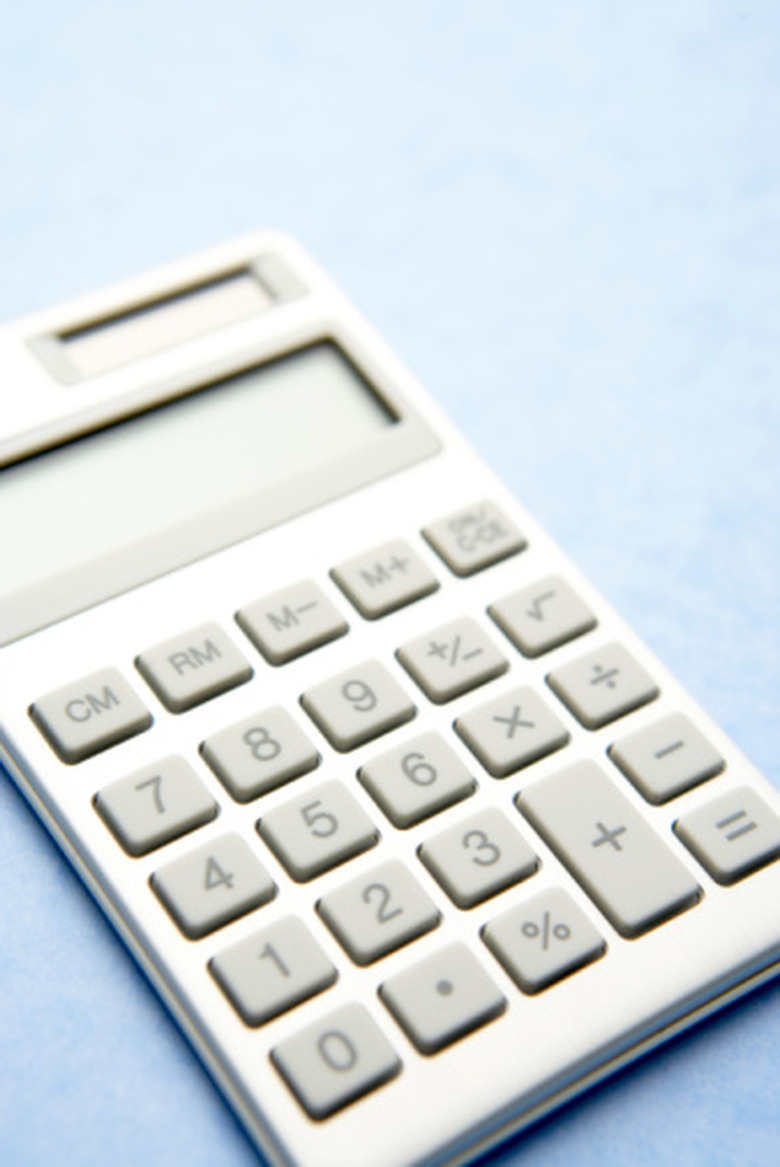Step-By-Step Math Problem Solvers For Proportions
The pre-algebra concept of proportions builds upon knowledge of fractions, ratios, variables and basic facts. Solving proportions requires finding the unknown numeric value of a variable within a set of ratios that are being compared. You can use step-by-step techniques to clarify and solve proportion problems by extracting information from word problems or tables and creating an algebraic equation to solve for "x." Proportion problems can solve for time, distance, rate, amounts, percents, numerals and conversions.
Numerical Proportion Problems
Step 1
Solve numeric proportions such as 4/5 = 20/x. Identify the variable, in this case as "x."
Step 2
Cross-multiply by multiplying the numerator in the first fraction by the denominator in the second fraction and the denominator in the first fraction by the numerator in the second fraction.
Step 3
Set up a new equation. Place the number you multiplied with the variable directly next to the variable, followed by an equal sign. Write the product of the other numbers on the right side of the equal sign. For example, in 4/5 = 20/x, the new equation becomes 4x = 100 after cross-multiplication.
Step 4
Divide both sides of the equation by the number next to the variable to get the variable alone, as in 4x/4 = 100/4. Cancel the numerator and denominator of the fraction containing the variable out, as in x = 100/4. Divide the denominator of the other fraction into the numerator. For example, 100/4 = 25, so x = 25.
Proportion Word Problems
Step 1
Read a proportion word problem and pull out the information that is being compared. For instance, in the problem: "John bought five apples for $2.50, how much would two apples cost?" pull out the amount of apples and the cost. In this case, the five apples are being compared to the known amount of two apples and the cost of $2.50 is being compared to an unknown cost.
Step 2
Convert the known values such as five apples and $2.50 into a fraction like 5/$2.50. Write a second fraction to convert the known amount and unknown variable. Make sure to write the known amount in the same placement as its comparison, such as 2/x. The apple amounts are the numerators and the costs are the denominators.
Step 3
Write an equation such as 5/$2.50 = 2/x. Cross-multiply the fractions, by multiplying the opposite numerators with the opposite denominators as in 5 x (x) = 5 x $2.50 to get 5x = $5.00.
Step 4
Divide both sides of the equation by the number next to the variable to find the unknown amount. For example, 5x/5 = $5.00/5 for and answer of x = 1.00 in this example.
Proportion Percentage Problems
Step 1
Solve percentage problems by using proportions. Read the problem to find and extract the percent and whole number. For example, if the question reads, "40 percent of 50 people voted today. How many people voted?", identify 40 percent as the known percentage and 50 people as the known whole.
Step 2
Place the known percentage as the numerator over a denominator of 100 because 100 is the total possible percentage.
Step 3
Place the known whole as the denominator of the second fraction and put a variable as the numerator of the fraction. For instance, 40/100 = x/50. Solve by cross-multiplying, as in 100x = 2,000. Divide both sides of the equation by 100 percent, as in x = 2,000/100 for an answer of 20.
Cite This Article
MLA
DiVico, Taylor. "Step-By-Step Math Problem Solvers For Proportions" sciencing.com, https://www.sciencing.com/stepbystep-math-problem-solvers-proportions-8428535/. 24 April 2017.
APA
DiVico, Taylor. (2017, April 24). Step-By-Step Math Problem Solvers For Proportions. sciencing.com. Retrieved from https://www.sciencing.com/stepbystep-math-problem-solvers-proportions-8428535/
Chicago
DiVico, Taylor. Step-By-Step Math Problem Solvers For Proportions last modified August 30, 2022. https://www.sciencing.com/stepbystep-math-problem-solvers-proportions-8428535/
